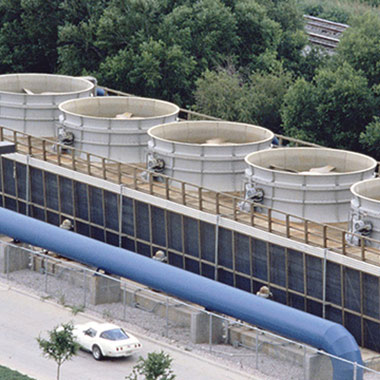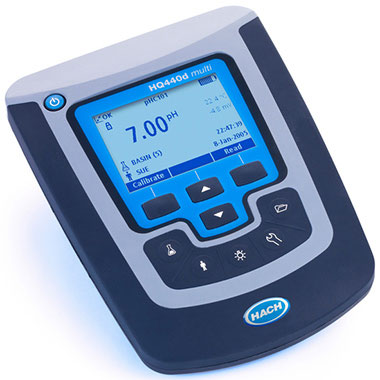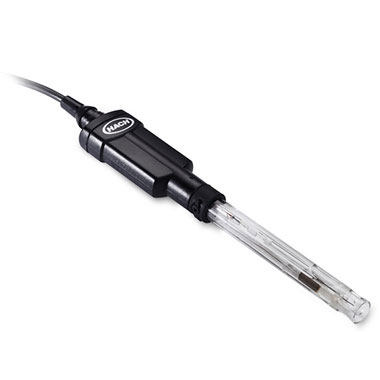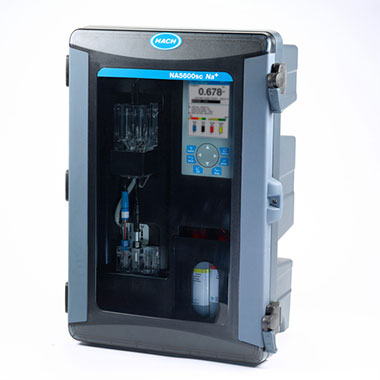-
PRODUCTS
- Lab Instruments
- Lab Meters and Probes
- Chemistries, Reagents, and Standards
-
Online Analyzers
Ammonium Analysers Ammonia Monochloramine Chlorine Analyzers
- CL17sc
- CL10sc Amperometric
- 9184 sc Amperometric
- เครื่องวิเคราะห์คลอรีนด้วยการวัดสี Ultra Low Range CL17sc
EZ Series Analysers- Iron
- Aluminium
- Manganese
- Phosphate
- Chloride
- Cyanide
- Fluoride
- Sulphate
- Sulphide
- Arsenic
- Chromium
- Copper
- Nickel
- Zinc
- Ammonium
- Total Nitrogen
- Total Phosphorus
- Phenol
- Volatile Fatty Acids
- Alkalinity
- ATP
- Hardness
- Toxicity
- Sample Preconditioning
- Boron
- Colour
- Nitrate
- Nitrite
- Silica
- Hydrogen Peroxide
- EZ Series Reagents
- EZ Series Accessories
- EZ sc Series Inorganics
- EZ sc Series Metals
- EZ sc Series Nutrients
-
Online Sensors and Controllers
Ammonium Sensors Conductivity Sensors
- 3400 Analogue Contacting
- 3400 Digital Contacting
- 3700 Analogue Inductive
- 3700 Digital Inductive
- 9525 DCCP System
- Industrial UV
- Flow and Collections
- Automated Lab Systems
- Test Kits & Strips
- Microbiology
- Lab Equipment and Supply
- Samplers
- Electrochemistry
- PARAMETERS
- APPLICATIONS
- INDUSTRIALS
- E-SHOP
- Service
- BRANDS
Hach Thailand
เลือกประเทศหรือภูมิภาคของคุณ:
Europe
Americas
Asia - Australasia
- Australia
- Mainland China
- India
- Indonesia
- Japan
- Malaysia
- New Zealand
- Philippines
- Singapore
- South Korea
- Thailand (Thai)
- Taiwan
- Vietnam
Middle East - Africa
Chemistries ONLINE SHOP: +6693 769 9254
Sodium
What is Sodium?
A soft, silvery-white, alkali metal, sodium is a chemical element with the symbol Na, atomic number 11, and atomic mass of 23. With just a single electron in its outer shell, sodium is highly reactive.
Sodium exists in numerous minerals such as feldspars, sodalite, rock salt (NaCl), etc., and it is the sixth most abundant element in the Earth's crust. All salts of sodium are highly water-soluble. Sodium and chloride ions are the most common dissolved elements by weight in the oceans.
Why Measure Sodium?
Sodium, part of highly soluble, conductive and corrosive compounds is a crucial parameter in water quality testing.
Pure and ultra-pure water / Steam processes
Today, trace sodium concentration monitoring has become one of the most important live indexes for water quality throughout the steam and water cycle in power plants, as well as in any steam-based industry. Sodium monitoring is critical to the efficiency and performance of a steam generation plant and to the longevity of its associated equipment.
Surface and ground water
Though sodium naturally occurs in groundwater, high concentrations may indicate pollution or saltwater intrusion. It is possible to identify hazards or contamination with sodium measurement.
Commonly occurring in sodium chloride or table salt, sodium is a key element in bodily fluids. However, in excess, sodium can pose health risks for individuals with certain health conditions. Therefore, sodium levels in drinking water must be monitored to safeguard human health.
At Hach ®, find the testing equipment, resources, training and software you need to successfully monitor and manage sodium levels in your specific process application.

Featured Products for Monitoring Sodium
เครื่องวิเคราะห์โซเดียม NA5600sc
Ensure uptime with accurate, low-level sodium measurements and predictive diagnostics.
Shop Now
Which Processes Require Sodium Monitoring?
Power Industry
Steam
Presence of sodium in concentration as low as micrograms or even nanograms per liter in steam before the superheater, may cause its stress corrosion.
Under the conditions of high pressure and temperature of today’s power plant, the problem of steam solubility of inorganic compounds is increasingly important.
Of significance is the steam solubility (in addition to carry-over) of sodium compounds, e.g. sodium chloride (NaCl) and sodium hydroxide (NaOH), because of the possibility of stress corrosion cracking in the superheating section. The measurement of sodium directly in steam immediately before entering the superheater is now recognized as a strong indicator of possible stress corrosion in the superheater.
It should be noted that corrosion will occur only if sodium is present with chlorides or hydroxide anions and not, for instance, with sulfates. Chlorides and hydroxides are corrosive, but not the sodium. The latter serves only as the carrier. Specifically, for plants with low boiler pressure (40-80 bars). Since non-volatile boiler treatments are typically sodium based (i.e. a mixture of sodium phosphate tribasic and sodium phosphate di-basic), the measurement of sodium in the steam is an excellent indication of mechanical carryover from the drum into the steam.
Condensate
Sodium measurement should be the preferred option for early warnings of excursions on condensates to minimize associated risks.
Condensate polishing plays a vital role in power plant cycle chemistry, providing the means to reduce the transport of metal oxide and ionic impurities to the steam generator during all modes of operation, mostly during start-up and upset conditions. The benefits of condensate polishing are:
- Reduced delays to commissioning and start-up as a result of chemistry transients
- Protection of the steam generator during impurity ingress, such as with condenser in-leakage
- Reduced impurities fed to steam generators, thereby minimizing the frequency of chemical cleaning
- Improved steam purity resulting in less turbine deposition and phase transition zone corrosion
- Virtual elimination of chemically influenced boiler tube failures
- Attainment of the high degree of feedwater purity necessary for chemical programs, such as oxygenated treatment for drum and once-through boilers
Careful management of condensate polishing systems is essential; otherwise polishing plants can become a source of ongoing feed system pollution. Extracting the maximum benefit from condensate polishing systems continues to be a top priority among many electric utility plants.
Although cation and specific conductivity are used frequently to detect excursions in the water/steam loop, it is no longer sufficiently sensitive to measure the very small condenser leaks which have assumed greater importance in modern plant designs. In everyday conditions (with possible temperature, pressure and flow upset or high conductivity background levels), the minimum meaningful variation will be 0.02 mS/cm. This corresponds to 11 ppb sodium.
Sodium analysis is much more sensitive. A Hach NA5600 sodium analyzer can accurately measure below 0.1 ppb. This is 100 times more sensitive than a conductivity measurement. Just as water quality is critical, early signs of excursions are also critical. Sodium measurement should be the preferred option to minimize risk.
Steam purity can be more accurately assessed by measuring sodium concentration in both steam and condensate, thus determining the “sodium balance.” The two concentrations should be equal. A higher level of sodium in the condensate indicates a condenser leakage. A lower level of sodium in the condensate indicates deposition of sodium in the steam circuit (on heat transfer surfaces, on turbine blades, etc.).
Sodium measurement is the only online technique that achieves accurate and rapid response at any time to detect traces of hydroxides and chlorides known to be contributory factors in the stress-corrosion of austenitic steel.
The origin of the de-superheating water is the condensate water. The quality of the de-superheating water must be without any doubt. If it is contaminated, this contamination will be brought directly into the de-superheated steam. The section most likely to be affected is the section of the superheater immediately following the point at which the de-superheater spray water is injected. It is made of austenitic steel for its mechanical behavior (low thermal dilatation coefficient), but it is more sensitive to corrosion (increased percentage of iron versus carbon). To avoid the catastrophic effect of impurities in the de-superheating water, any excursion must be detected as quickly as possible.
Online sodium measurement is the only technique that achieves accurate detection of excursions. A Hach NA5600sc sodium analyzer will ensure a rapid response at any time through regular reactivation of the electrode.
Demineralization Plant
For a demineralization plant, online sodium measurement is all about ion exchange resin management. (Learn more about hardness). Customer benefits are:
- Better utilization of the resin capacity
- Minimize sodium breakthroughs
- Optimize acid rinse-out
- Optimization of regeneration cycles
Cation resin bed exhaustion and its regeneration timing can be monitored with high sensitivity and reliability using online sodium analyzers. Cation resins remove cations such as sodium (Na +). Sodium is the first cation that breaks through when the cation resin bed is exhausted.
Measuring sodium immediately after cation resins gives an early warning of breakthrough. Removing the saturated resin bed and replacing it with a new (regenerated) one protects the ion exchange capacity of the mixed-bed resins installed farther down the stream.
Quality of the incoming water, the resin quality itself, and temperature modifies the ion exchange capacity of the cationic resin bed. This influences the time before the next regeneration. When this time is indicated by a simple volume of sample running through the resin, it is an estimate that may lead to saturation and breakthrough or underuse of resin capacity. Online measurement of sodium allows regeneration of the cation resin as required.
After mixed bed resins, online sodium analysis ensures the quality validation of the demineralized water delivered to the make-up plant. Mixed bed resin contains a mixture of both cation and anion exchange resins for a fine polish of the pure water. It reduces any contaminant left in the pure water.
Remarkable progress has been made over the past decade to reduce the levels of contaminant ions in the treated water from mixed beds. Specifically, in nuclear plants (PWR), mixed beds treated water purity is reported in steady state values at 25 to 35 ppt for sodium. Here, sodium analyzers are used to monitor the final water quality, acting as a final check of quality. Hach NA5600 sodium analyzers are used to check the quality of the final water down to 20 ppt levels.
Additionally, a malfunction of the regeneration cycle of the mixed bed resin is detected by sodium monitoring. Release of sodium can happen by accidental caustic release when there is insufficient rinsing of the mixed bed anion resin. Again, the warning comes earlier and with higher precision with a sodium analyzer than by conductivity.
Range of Measurement
Sodium levels lower than 1 ppb are commonly found at the mixed bed output, both in the steam circuit and in the condensate. Levels of 0 - 10 ppb can be found under normal working conditions at the cation exchangers output, but this can become as high as 100 ppb at the resin exhaustion or in boiler water.

Industrial Manufacturing
The condensates from combined steam and cogeneration boilers in heavy industry (chemical and petrochemical, pulp and paper, metal, etc.) can represent a large saving due to the high quality of the steam condensates used in the high-pressure boilers. As the steam and/or the condensates are often used to transfer heat to the process, their recovery is subject to their level of quality. Any degradation of their quality is a sign of ingress of the process fluids into the condensate and consequently requires maintenance on the circuits.
In processes where caustic soda or concentrated sodium salt solutions are likely to be present in contact with the steam and/or condensates, the analysis of sodium represents an alternative to the usual measurement of conductivity with a higher sensitivity for an early detection.
Conductivity of high-pressure condensates are usually better than 1 μS and limits set for 5 to 10 μS to decide the recovery or not, in order to avoid early exhaustion of the polishing demi-resins. Such conductivity corresponds to the presence of about 2 to 5 ppm (parts per million) of sodium salt.
The actual quality of the standard ion-exchange resins used in demineralization plants in most power or cogeneration plants, produce water with sodium concentrations lower than 10 ppb (parts per billion) in normal conditions. A raise from 1 to 10 ppb is already significant and a raise from 10 to 100 ppb shows without any doubt a major problem requiring immediate intervention.
Sodium analyzers have been operating with full satisfaction and little maintenance over the past decade in most power plants with low ppb and even ppt concentration levels in nuclear plants.
Conductivity measurement can reliably detect 2 to 5 ppm of sodium, while sodium measurement detects 2 to 5 ppb. That's 1000 times lower. This sensitivity allows chemists to follow trend changes before any leakage requires major immediate action. This sensitivity advantage can be converted over time to analyze the origin of the leakage and to plan either a production reduction, or even to stop production far enough in advance to avoid costly, emergency shutdowns.

Ground Water
All groundwater contains some sodium due to rocks and soils containing sodium compounds. However, elevated sodium levels may indicate contamination that requires treatment:
- Erosion of salt deposits
- Water intrusion in wells (in coastal areas)
- Surface water contamination from road salt
- Irrigation and precipitation leaching through soils high in sodium
- Pollution by sewage effluent
- Infiltration of leachate from landfills or industrial sites

Drinking Water
Water softening by ion-exchange or lime-soda ash can increase the sodium content of drinking water. (Learn more about water hardness.)
While sodium helps maintain water balance in the human body, excess sodium causes negative health effects especially for those with heart conditions, circulatory or kidney diseases, or cirrhosis of the liver. Therefore, sodium levels in drinking water are regulated to safeguard human health.

Pulp and Paper Industry
Sodium sulfite or bisulfite can be used as an oxygen scavenger agent to treat water being fed to steam boilers, in order to prevent corrosion. In this case, monitoring sodium will help in optimizing the process and provide chemical cost savings.

Metals & Mining Industry
During water treatment for reuse, monitor for sodium and other parameters to maximize yield from hydrometallurgical and pyrometallurgical processes.

How is Sodium Monitored?

Direct Sodium ISE Method
The Sodium Ion Selective Electrode (ISE) is a sodium-sensing element that is bonded into an epoxy body. When the sensing element touches sodium ions in a solution, a potential develops across the sensing element. The potential is proportional to the level of sodium ions in the sample. The potential is measured against a constant reference potential with a pH/mV meter or ISE meter.

Sodium Intellical ® ISE
Intellical ™ ISENa381 is a digital, combination, sodium ion selective electrode (ISE) with a refillable double junction reference and built-in temperature sensor. The electrode measures sodium concentration in water samples. A 59 mL bottle of 0.02 M NH 4Cl Electrode Filling Solution is included with the probe. The laboratory version of this ISE is shockproof with its Zeonor plastic body.The Intellical ISENa381 probe is available with a 1 or 3 meter cable and is intended for laboratory use. The ISENa381 is ideal for measuring sodium concentrations in wastewater, drinking water and general water quality applications.

Online or Process Analysis
NA5600sc Sodium Analyzer uses an ion-selective electrode measurement after pH conditioning. Sample pH conditioning is essential for limiting the interference of temperature or other ions on sodium measurement. Constant, temperature-compensated buffering is assured using regulated reagent addition across sample pH and temperature changes. In case of a multi-channel version, the “smart” rinsing sequence between channels ensures a minimum cycle time of 10 minutes and no carry-over effect.
Ranges:
- Analyzers without cationic pump: 0.01 ppb - 10,000 ppb
- Analyzers with cationic pump: 0.01 ppb - 200 ppm
Frequently Asked Questions
What is the response time of the IntelliCAL ® ISENa381 Sodium Ion Selective Electrode (ISE)?
The IntelliCAL ® ISENa381 Sodium Ion Selective Electrode (ISE), 1 or 3 meter cable (Product # ISENA38101 or ISENA38103) has a response time of 1 to 2 minutes in samples with concentrations > 1.4 mg/L.
What is the proper way to store the IntelliCAL ® ISENa381 Sodium Ion Selective Electrode (ISE)?
For short term storage, put the filling-hole cap in the filling hole and store the probe in a 25mL of 100 mg/L Na + standard solution with one Sodium Ionic Strength Adjustor (ISA) Powder Pillow (Product # 4451569).
For long term storage:
- Put the filling-hole cap in the filling hole.
- Rinse the probe with ISA rinse solution (one Sodium ISA per 25mL of deionized water). Never rinse the probe with de-ionized water alone.
- Fill the probe soaker bottle half full of Electrode Fill Solution, 0.02 M NH 4Cl (Product #2965126).
- Loosen the soaker bottle cap and put the soaker bottle on the probe. Turn the soaker bottle cap clockwise to tighten the soaker bottle cap.
- Make sure the solution in the soaker bottle completely covers the glass bulb and reference junction holes.
- Before use after long-term storage, condition the probe in 25mL of 100 mg/L Na+ standard solution with one Sodium ISA for at least 8 hours.
For the IntelliCAL ® Sodium ISENa381 probe, what is the required sample pH range?
The sample pH range is from 4 - 14, and it must be adjusted to > pH 9 with the Sodium ISA (ionic strength adjuster).
Are the Polymetron 9240 and 9245 still available?
The NA5600sc has replaced the Polymetron models.



